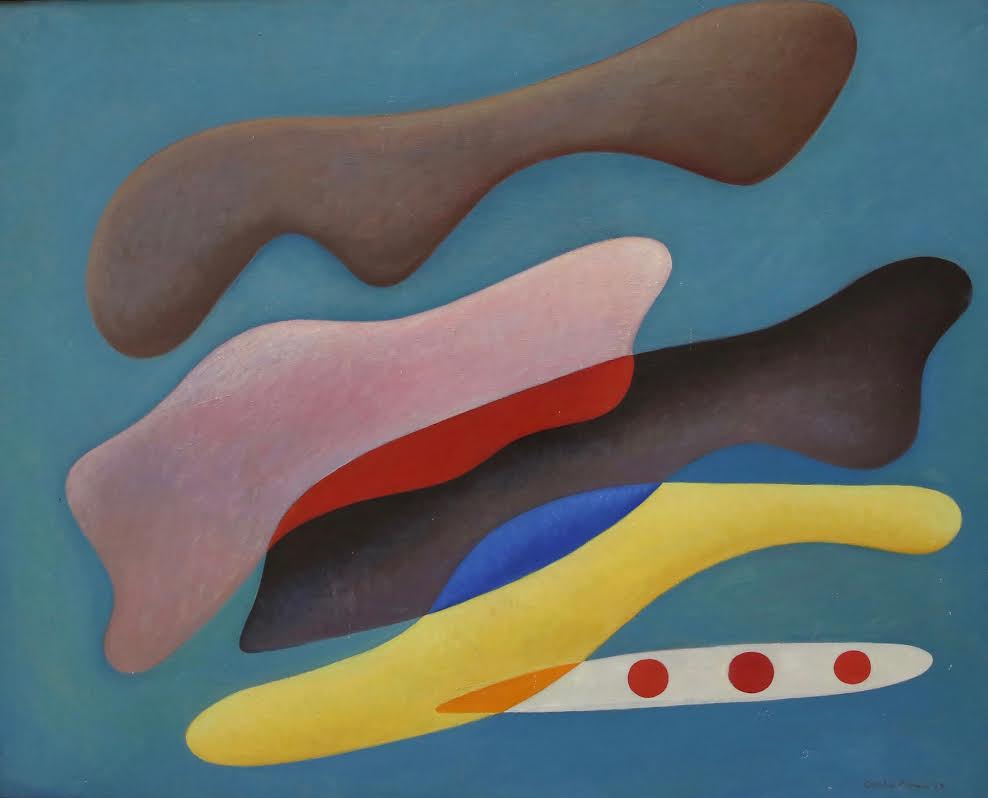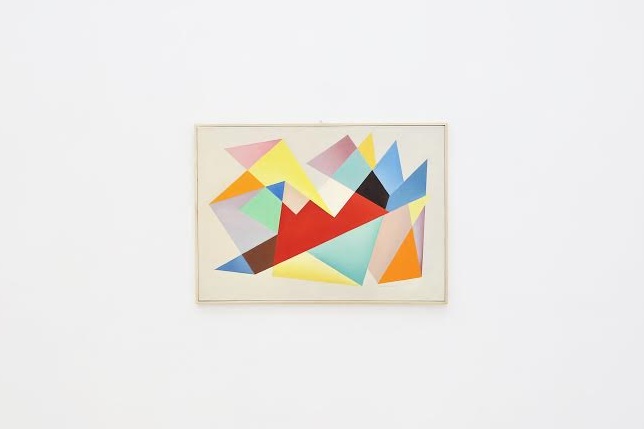Chi è Carla Prina?
Carla Prina at Shin Gallery
What effect does New York City have on European abstractionists? For Mondrian––who arrived in the United States in 1940––the city animated his iconically distant grids, which were humanized by New York’s own gridded streets, alive with music and “boogie woogie.” (As hard as it is to believe, Mondrian was a spirited dancer and often would share the floor with Lee Krasner!) For Carla Prina, an Italian abstractionist of the generation after, the effect was something similar, but with an added dash of Studio 54. Prina came to New York in the 1980s, where her geometric abstractions took on a Ziggy Stardust energy.
Carla Prina, Untitled, 1950, oil on canvas, 40 x 31.5 in. (100 x 80 cm.) © SHIN GALLERY, New York.
Though she always wanted to exhibit in this city, it was not until Shin Gallery took on her representation that that dream could come true––posthumously, unfortunately, as the artist died in 2008. Carla Prina: A Rediscovery, on view until June 2, is the first exhibition of her work in the United States.
Of course, as is the case for many female artists, the introduction is long overdue. Prina’s work is recognizably canonical, and its amorphous shapes floating through an unplaced tonal field would not be out of place at MoMA. While the museum does not own any of her work, you might pick up on the influence of someone whose work it owns in spades (and which is on view there through June 15): that is, Joan Miró, with whom Prina shared a studio in the 1950s. Jean Arp, you might guess, was also a friend.
Belonging to a group of abstractionists in Como, Italy, Prina was among painters dedicated to creating a uniquely Italian modern art, a cohort which included Manilo Rho, Mario Radice, and Carla Badiali. Her work, however, is not simply a reiteration of these perhaps more recognizable names, as she is a remarkable artist in her own right.
Shin Gallery has done the work justice by curating this elegant show, grouped simply by decade. That the space is awash in sun from the skylight above only helps highlight the works’ surprising approachability. Get closer and you can see that Prina never used tape to create hard edges, and the slight waiver of the artist’s hand is always present.
Carla Prina, Untitled, 1950, oil on wood panel, 23.6 x 31.5 in. (60 x 80 cm.) © 2019 SHIN GALLERY, New York.
But what is most interesting is the way she juggles color, form, dimension, and tone, using all to defy the paintings’ initial flatness. The ground upon which these strange geometries float itself is mottled with shadow. Some shapes are shaded, their ombré separating them from each other, while other shapes alongside them are painted with a single, unmodulated tone. But even these flat forms overlap in ways which suggest we are not looking at a single plane of color and shape. In an untitled work from 1962, for example, two triangles seem to interlock as if they have been notched and fitted into each other. In the same work, a pink shaded triangle is abruptly interrupted by its grey field. Suddenly what appeared to be anonymous background has foregrounded itself, demanding part of the action.
Carla Prina, Untitled, 1966, oil on canvas, 23.6 x 31.5 in. (65 x 92 cm.) © SHIN GALLERY, New York.
Throughout, Prina engages with themes that belong to the modernist project, but in such a way as to unite them—in her work constructivism is married to surrealism, which is joined with traditions of collage and assemblage, but with a dash of something we haven’t seen before. It’s exciting and familiar at the same time. And in a moment when institutions are struggling to balance their rosters, this show is museum-ready. Curators, take note.
Shin Gallery
Until June 2




